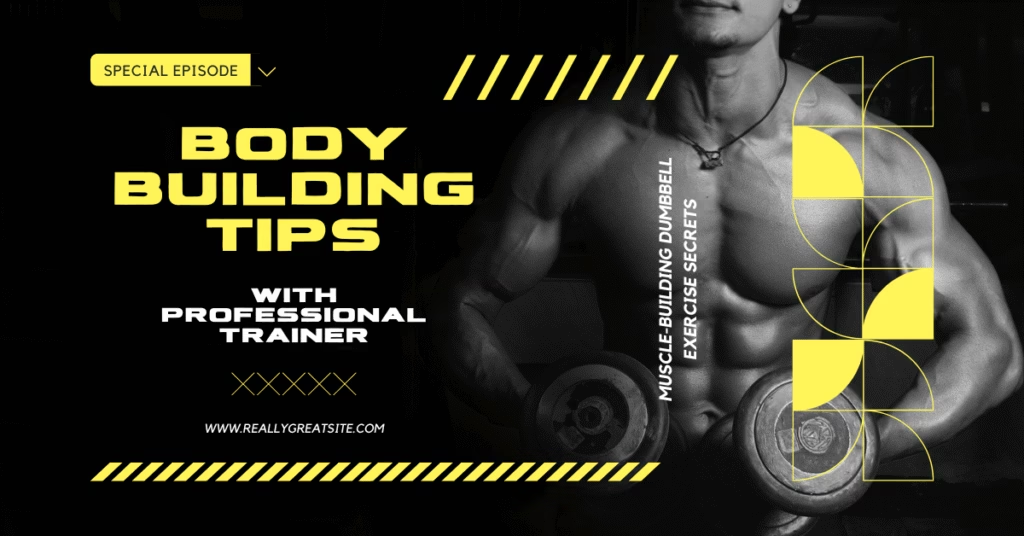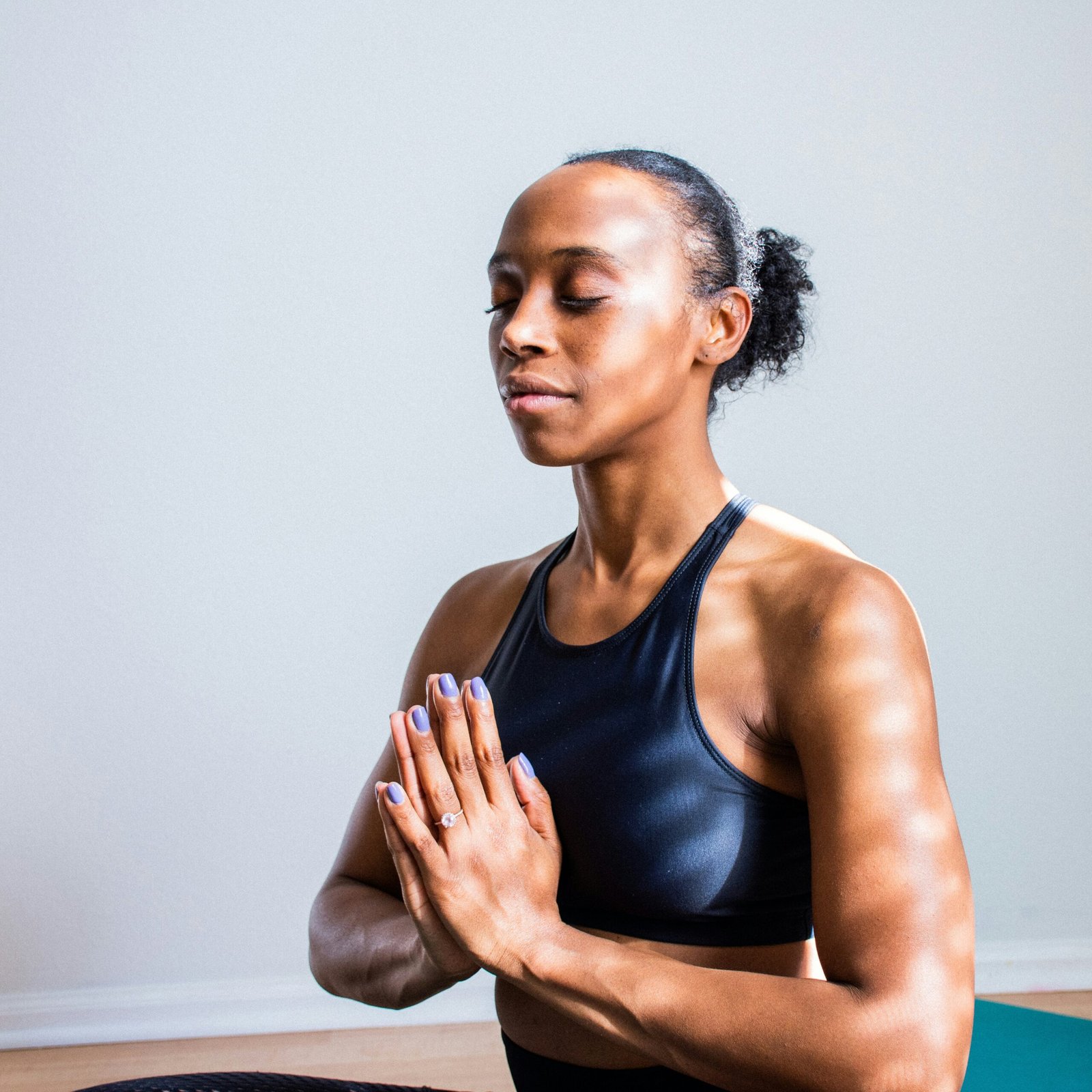Introduction to Dumbbell Training
Dumbbell exercise has emerged as a favored approach for individuals seeking to achieve muscle-building results, particularly in the context of home workouts. One of the most significant advantages of using dumbbells, compared to traditional gym equipment, is their capacity to promote a greater range of motion. This feature allows for enhanced muscle engagement, enabling users to target specific muscle groups effectively. As each limb can move independently, dumbbells facilitate balanced growth and development, which is often overlooked with fixed machines that can lead to imbalances.
With the surge in popularity of at-home fitness routines, dumbbells offer a practical solution for those who prefer or need to forego gym membership. The convenience of being able to perform targeted dumbbell exercises at home not only fosters a more consistent workout routine but also allows individuals to tailor their home muscle gains according to personal fitness goals. Moreover, dumbbells are versatile and require minimal space, making them ideal for any home environment.
This blog post will delve into five essential muscle-building secrets involving dumbbell training that can help transform a standard routine into an effective home workout plan. These secrets are designed to optimize your training strategy, ensuring maximum gains with every session. As we explore various techniques, it is crucial to understand the incredible potential of dumbbell exercises, not just as substitutes for gym-based routines but as powerful tools for developing strength and size. By the end of this article, readers will not only appreciate the importance of these methods but also feel empowered to incorporate them into their fitness regimens successfully.

Secret 1: The Power of Unilateral Training
Unilateral training, which involves exercising one side of the body independently, is a powerful method that can significantly enhance muscle-building results. This approach effectively addresses and corrects muscle imbalances, allowing for a more symmetrical physique. By targeting each side individually, unilateral dumbbell exercises ensure that the weaker side is not overshadowed by the stronger one, thus promoting even muscle development. This training method also engages the core more intensively, as it requires more stabilization and control, leading to improved overall strength and function.
Incorporating unilateral dumbbell exercises into your home workout routines can be remarkably simple and efficient. Some effective options include the single-arm dumbbell row, which not only builds back strength but also emphasizes core stability, and the single-leg dumbbell deadlift, which enhances balance and engages the hamstrings on both sides of the body. The benefits of these exercises extend beyond aesthetics; they help in advancing functional strength that translates to daily activities.
To properly integrate unilateral training into your regimen, consider starting with a well-rounded warm-up to prepare your muscles and joints. Then, select a few unilateral exercises that target different muscle groups, allowing for a comprehensive approach to your home muscle gains. Aim for focused sets, ensuring you complete equal repetitions on both sides of the body. This method not only maximizes results but also reduces the risk of injury by promoting stability and strength balance.
Ultimately, embracing unilateral training through targeted dumbbell exercises can reinvigorate your fitness routine. By focusing on one side of the body at a time, you’ll not only develop strength and enhance muscle-building potential but also cultivate a more defined and balanced physique.
Secret 2: Time Under Tension (TUT)
Time Under Tension, commonly referred to as TUT, is a critical concept in the realm of muscle-building, particularly for those who prefer to train without the confines of a gym. This principle focuses on how the duration that muscles are actively engaged during an exercise can significantly influence growth. By incorporating controlled movements and varying speeds in your dumbbell exercises, you can maximize muscle gains, even from the comfort of your home workout space.
When performing exercises, it is beneficial to slow down each repetition. This approach increases the tension on the muscles for a longer duration, thereby prompting them to adapt and grow stronger. For instance, when executing bicep curls, instead of quickly lifting and lowering the dumbbell, take approximately 3-4 seconds during both the lifting and lowering phases. This not only enhances the effectiveness of the movement but also encourages muscle hypertrophy, leading to optimal home muscle gains.
In practice, aim for a TUT of around 30 to 60 seconds for each set. This timeframe allows your muscles to experience sufficient stress, which is crucial for triggering muscle-building responses. Additionally, incorporating pauses at the peak contraction of various dumbbell exercises can further amplify the time under tension and enhance muscular engagement. For example, holding a dumbbell in the contracted position for a second or two before lowering it creates even greater stress on the working muscles.
Utilizing TUT effectively can transform your home workouts into powerful muscle-building sessions without the need for a gym. Whether focusing on compound movements or isolation exercises, adopting this technique can lead to significant improvements in your fitness journey. Ultimately, mastering Time Under Tension can be one of the most effective strategies for achieving substantial muscle growth in any workout setting.
The Importance of Compound Movements
When it comes to building muscle, especially through dumbbell exercises performed at home, the incorporation of compound movements is essential. Compound movements refer to exercises that engage multiple muscle groups simultaneously, making them exceptionally effective for promoting overall strength and muscle growth. Unlike isolation exercises, which typically target a single muscle group, compound movements allow for a more comprehensive approach to muscle-building. This is particularly beneficial for those seeking home muscle gains without access to a gym.
Common examples of compound dumbbell exercises include the dumbbell squat, dumbbell bench press, and dumbbell lunges. Each of these exercises not only works the primary muscles targeted but also activates secondary muscle groups, resulting in a more efficient workout. For instance, during a dumbbell squat, the quadriceps and glutes are the primary movers, but the core, back, and even the calves engage to maintain balance and stability. This extensive engagement leads to enhanced muscle fibers’ stimulation, ultimately contributing to better growth and strength.
To effectively integrate compound movements into your home workout routine, aim to include at least one compound exercise in each session. A well-structured workout plan may consist of a mix of compound and isolation exercises, prioritizing compound movements for maximum efficiency. Start with two to three compound exercises per workout, gradually increasing the weight and intensity as your strength improves. This progressive overload technique is key to achieving sustained muscle-building results over time. By focusing on compound movements, you can maximize your workout efficiency and accelerate your muscle-building journey, all within the comfort of your home.
Don’t just read—watch! Head over to our YouTube Channel where we break down each exercise with step-by-step demos, real-time workouts, and expert tips to help you build muscle faster from home.
Secret 4: Mastering the Mind-Muscle Connection
The mind-muscle connection refers to the conscious focus and awareness of the muscle being worked during an exercise. This connection is pivotal in maximizing home workout effectiveness, especially when utilizing dumbbells for muscle-building. By intentionally directing mental energy towards the targeted muscle groups, individuals can enhance their workout and achieve greater home muscle gains.
To improve this mind-muscle connection, one effective technique is to slow down the tempo of dumbbell exercises. This not only allows for better form but also increases the time under tension for the muscle, fostering a deeper engagement. For instance, during bicep curls, rather than hastily lifting the weights, consider pausing at the peak of each curl. This pause enables greater awareness of the muscle’s contraction and facilitates better recruitment of muscle fibers.
Additionally, incorporating visualization techniques can significantly enhance the mind-muscle connection. Before executing any dumbbell exercise, take a moment to visualize the targeted muscles contracting. This mental imagery can create a stronger focus, transforming the workout into a more mindful practice. Research has shown that athletes who utilize visualization alongside training typically experience enhanced performance and muscle activation.
It is also beneficial to regularly switch up dumbbell exercises to prevent cognitive and muscular adaptation. By introducing variations and new movements, you can continuously challenge both your mind and muscles, maintaining a keen focus on the connection. Techniques such as keeping a training journal to note feelings and experiences during workouts can foster this awareness, improving not only performance but also overall satisfaction with your home workout regimen.
By mastering the mind-muscle connection, individuals can elevate their muscle-building potential, even without access to a gym. The psychological aspects of training play a crucial role, making profound differences in home muscle gains achievable through focused, intentional practices. This connection is a powerful tool that, when cultivated, can lead to substantial improvements in strength and muscle development through dumbbell use.
Secret 5: Progressive Overload Techniques
Progressive overload is a fundamental principle in the realm of muscle-building, playing a crucial role in achieving substantial home muscle gains. The essence of this concept lies in the necessity to continually increase the demands on your muscles during workouts, especially when utilizing dumbbells in a home workout setting. Without this incremental challenge, the body adapts, leading to stagnation in strength and size. Therefore, understanding and implementing progressive overload techniques is vital for anyone seeking effective muscle development.
One of the most straightforward methods to achieve progressive overload is by gradually increasing the weight of your dumbbells. For instance, if you are currently lifting ten pounds, aim to increase that to twelve pounds once you can complete your desired number of repetitions comfortably. This simple adjustment can create a significant impact on your muscle-building journey. Additionally, varying rep ranges is another effective strategy. If you typically perform three sets of eight reps, consider changing to four sets of six reps with a heavier weight, or five sets of ten reps with a lighter weight. This not only keeps your muscles guessing but also encourages further adaptation and growth.
Another aspect to consider is modifying rest times between sets. Reducing your rest periods while maintaining your weight can enhance the intensity of your workout, potentially leading to greater hypertrophy. Conversely, if you find yourself lifting heavier weights without initially increasing the volume or intensity, gradually extending rest periods may allow for better recovery, which can also translate into increased strength over time.

In conclusion, employing progressive overload techniques through weight adjustments, rep variations, and strategic rest periods is essential for muscle growth. By consciously pushing your limits during dumbbell exercises, even within the comfort of your home, you can ensure consistent progress and achieve your muscle-building objectives effectively.
Putting It All Together: Sample Workout Plan
To effectively incorporate muscle-building techniques into your home workout routine without the necessity of a gym, we present a sample dumbbell workout plan. This week-long program focuses on unilateral exercises, compound movements, and Time Under Tension (TUT) principles, which are essential for achieving home muscle gains. By following this plan, individuals can maximize the effectiveness of their dumbbell exercises.
Day 1: Upper Body
Start with a warm-up of dynamic stretches focusing on the shoulders and arms. The session will include:
- Dumbbell Bench Press: 4 sets of 8-10 reps
- One-Arm Dumbbell Row: 3 sets of 10 reps each side
- Dumbbell Shoulder Press: 4 sets of 10-12 reps
- Dumbbell Lateral Raise: 3 sets of 12-15 reps (focus on TUT)
Day 2: Lower Body
This day will center on unilateral leg exercises:
- Dumbbell Bulgarian Split Squats: 4 sets of 8-10 reps per leg
- Dumbbell Deadlifts: 3 sets of 10-12 reps
- Dumbbell Lunges: 3 sets of 10 reps each leg
Day 3: Active Recovery
Engage in light cardio or yoga to maintain flexibility.
Day 4: Push & Pull
This day repeats some upper body exercises with a focus on volume:
- Dumbbell Incline Press: 4 sets of 10-12 reps
- Renegade Rows: 3 sets of 8-10 reps each side
Day 5: Full Body
Incorporate compound movements:
- Dumbbell Thrusters: 4 sets of 8-10 reps
- Dumbbell Swings: 3 sets of 12-15 reps
Ensure to adjust weights and reps throughout the week to facilitate progressive overload. Maintain proper form, focus on muscle engagement, and incorporate rest periods as needed. This structured plan allows for consistent home muscle gains while optimizing dumbbell workouts without the need for a gym setting.
Common Mistakes to Avoid
Building muscle effectively using dumbbells can be a rewarding journey, albeit one fraught with potential pitfalls. One of the most common mistakes individuals make is neglecting proper form during dumbbell exercises. Improper form not only reduces the effectiveness of the workout but can also lead to injury. It is crucial to learn the correct techniques for each exercise, ensuring that your movements are controlled and deliberate. Whether performing a dumbbell bench press or a side lateral raise, focusing on form helps maximize muscle-building efforts, especially when aiming for home muscle gains.
Another significant mistake is failing to engage the mind-muscle connection. This concept refers to the ability to focus on the target muscle throughout an exercise. Many individuals rush through their sets, squandering opportunities to stimulate growth. By consciously directing your attention to the muscles being worked, you are likely to enhance activation and engagement, which translates to better results. Ensuring that the mind is attuned to the muscle can make a noticeable difference in the success of a home workout routine.
Furthermore, many aspiring lifters underestimate the importance of recovery. Overtraining can be counterproductive, negating muscle-building efforts. It is essential to allow adequate time for muscles to repair and grow stronger after a workout. This includes getting sufficient sleep, maintaining proper nutrition, and incorporating rest days into your routine. When using dumbbells for workouts at home, recognize that muscle gains are not solely a product of lifting; recovery plays an equally critical role in building strength and endurance.
By avoiding these common mistakes—ensuring correct form, cultivating the mind-muscle connection, and prioritizing recovery—you can significantly enhance your muscle-building journey, even without the need for a gym.
Nutritional Considerations for Muscle Building
When engaging in a home workout focused on muscle-building exercises with dumbbells, it is essential to consider the nutritional aspects that significantly influence muscle growth. Proper nutrition works hand in hand with physical training to maximize home muscle gains. A well-balanced diet is crucial, particularly when aiming to achieve desired results without access to a gym.
A foundational element in muscle-building nutrition is the appropriate balance of macronutrients: proteins, carbohydrates, and fats. For individuals participating in dumbbell exercises, an increased protein intake is essential, as protein serves as the building block for muscle tissue repair and growth. Aim for a daily intake of approximately 1.6 to 2.2 grams of protein per kilogram of body weight. Complementing protein-rich foods such as lean meats, dairy products, legumes, and nuts with sufficient carbohydrates will provide the energy needed for intense workouts and recovery, facilitating greater muscle-building outcomes.
Micronutrients, including vitamins and minerals, should not be overlooked. These play critical roles in various bodily functions, including immune support and energy production, which are vital for sustaining a regular home workout routine. Nutrient-dense foods like fruits, vegetables, and whole grains should be incorporated into daily meals to ensure an adequate supply of these essential elements.
Another vital aspect of nutritional considerations is hydration. Adequate fluid intake before, during, and after workouts enhances performance and supports recovery processes. As you strive for muscle-building goals, establishing a routine for meal timing can be beneficial as well. Consuming a balanced meal or snack containing protein and carbohydrates within the post-workout window (ideally 30 minutes to two hours after exercising) can elevate recovery and enhance muscle repair.
By aligning nutritional habits with fitness goals, individuals can significantly boost their effectiveness in realizing their muscle-building ambitions through home workouts using dumbbells.
Conclusion: Unlocking Your Muscle-Building Potential
In the pursuit of effective muscle-building, it is essential to leverage the strategies discussed throughout this post. The five secrets unveiled highlight the importance of utilizing dumbbells for strength training, emphasizing their versatility in achieving significant home muscle gains without the need for a traditional gym setting. By incorporating the right techniques and focusing on proper form, individuals can optimize their dumbbell exercises to maximize results.
The first secret illustrates the value of compound movements, which stimulate multiple muscle groups simultaneously, making workouts more efficient. Progressively increasing weight over time, as discussed in the second secret, is crucial for muscle hypertrophy. Not only does this technique promote strength gains, but it also encourages the body to adapt and grow. Furthermore, paying attention to the tempo of exercises, as detailed in the third secret, can lead to better muscle engagement and improved results. Implementing a mix of training angles and positions, as emphasized in the fourth secret, helps target muscles from different perspectives, encouraging balanced development. Lastly, the fifth secret reminds us of the necessity of recovery and nutrition, which are vital for sustaining muscle growth.
As you embark on this journey to enhanced muscle-building, consistency in your home workouts is key. By adhering to these techniques and allowing yourself the patience to witness progress, you will effectively pave the way for substantial improvements in your physique. Stay informed about fitness and nutrition, as continual education empowers you to make better choices that support your goals. Remember, with dedication and the right approach, unlocking your muscle-building potential at home with dumbbells is entirely within reach.



